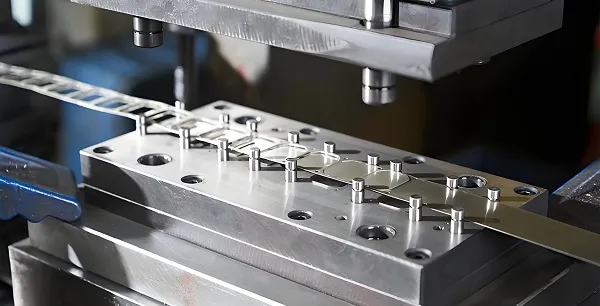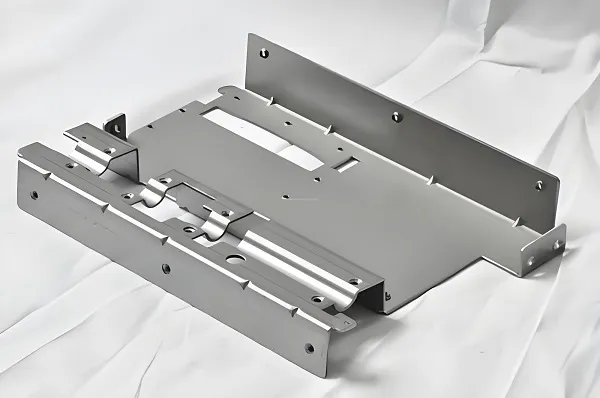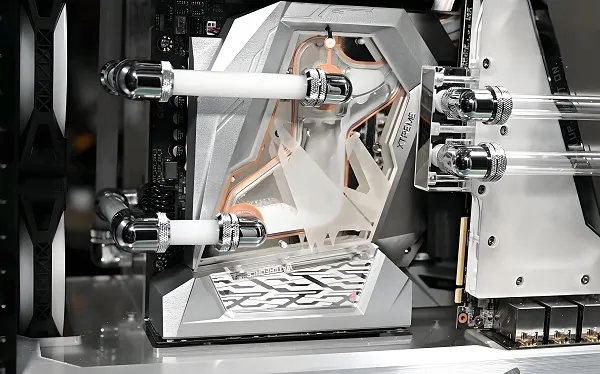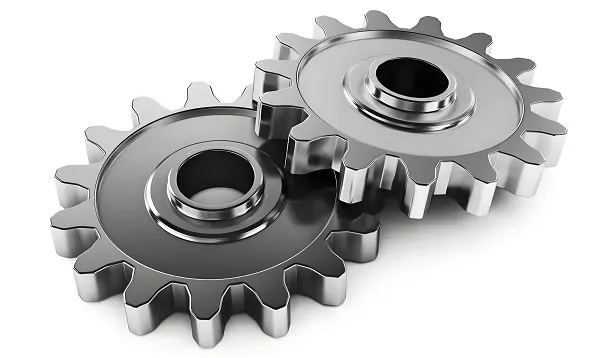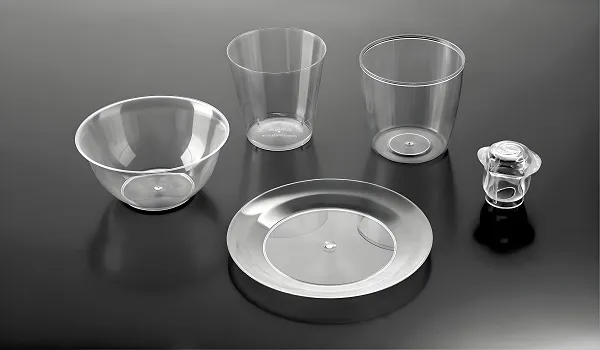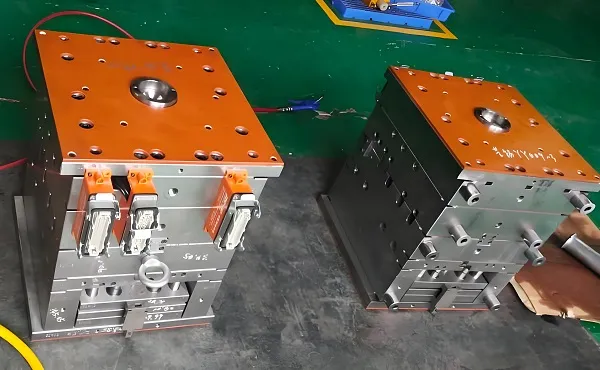In fields such as food machinery, medical devices, and aerospace, where extremely high requirements for corrosion resistance and strength are demanded, the processing quality of stainless – steel parts directly determines the performance and service life of the equipment. CNC machining services achieve the leap from “inefficient rough processing” to “efficient precision manufacturing” through data – driven precise processes, special processing technologies, and full – process quality control.
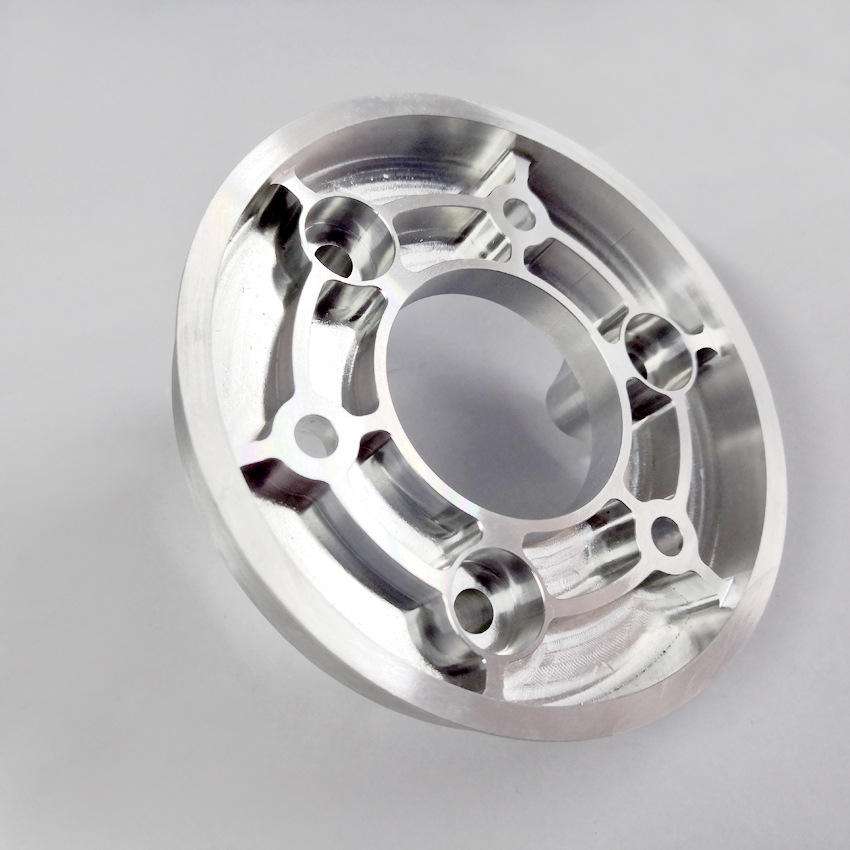
I. Why is Traditional Processing Difficult to Meet the Requirements of Stainless – Steel Parts?
Q&A: What are the core advantages of the CNC machining service for stainless – steel parts?
Traditional processing methods have three core pain points when dealing with stainless – steel parts (especially common grades such as 304, 316L, and 17 – 4PH):
Traditional processing methods have three core pain points when dealing with stainless – steel parts (especially common grades such as 304, 316L, and 17 – 4PH):
- Low processing efficiency: Stainless – steel materials have high hardness (HB 150 – 200) and large plasticity. Work – hardening easily occurs during cutting, and ordinary cutting tools wear severely. The cutting speed can only be maintained at 30 – 50m/min. The processing efficiency is 60% – 70% lower than that of aluminum alloy, and the unit processing cost increases by 50% – 80%.
- Loss of dimensional accuracy control: The high heat generated during cutting (local temperature can reach 800℃) causes thermal deformation of the material. Traditional processing methods are difficult to control dimensional tolerances. The dimensional error of conventional parts can reach ±0.15mm, which cannot meet the requirements of precise assembly (±0.03mm).
- Surface – quality defects: Stainless steel has high viscosity and is prone to sticking to the cutting tool, resulting in surface defects such as scratches, burrs, and tool marks. The surface roughness Ra value often reaches 6.3μm, and additional polishing treatment is required, increasing working hours and costs.
However, the CNC machining service for stainless – steel parts takes “efficiency, precision, and quality” as the core:
- Full – process process optimization:
- Efficiency improvement: Using special stainless – steel processing tools and optimized cutting parameters, the cutting speed is increased to 80 – 120m/min, the feed rate is increased by 30%, the processing efficiency is increased by 50%, and the unit cost is reduced by 35%.
- Precision assurance: Technologies such as cryogenic cooling and minimum – quantity lubrication are used to control cutting heat. Combined with high – precision CNC equipment (positioning accuracy ±0.005mm), the dimensional tolerance is controlled within ±0.01mm, meeting the high – precision requirements of medical, aerospace, and other fields.
- Surface – quality improvement: Special tool coatings and cutting strategies are used to reduce tool sticking, making the surface roughness Ra≤1.6μm, and in some processes, Ra≤0.8μm, reducing subsequent polishing processes.
- Data – driven intelligent processing: Based on the characteristics of stainless – steel materials and part structures, processing processes are optimized through simulation software, reducing trial – and – error times. The cycle from order confirmation to delivery is shortened by 40% – 50%, quickly responding to customer needs.
II. How Does the Core Process of CNC Machining for Stainless – Steel Parts Achieve Breakthroughs?
- Innovation in special – purpose tools and fixtures
- High – performance tool materials: Cobalt – containing high – speed steel (M42) and coated carbide (TiAlN, TiCN coatings) tools are used. The hardness is increased to HRC 68 – 70, the wear resistance is enhanced by 4 – 5 times, and the cutting speed is increased by 2 – 3 times. For difficult – to – machine stainless steels (such as duplex stainless steel), PCBN super – hard tools are used, and the cutting efficiency is increased by 60%.
- Tool geometry optimization: Tools with a large rake angle (12° – 15°) and a large helix angle (35° – 40°) are designed to reduce cutting force and cutting heat. The chip – breaker groove is optimized to improve the chip shape and prevent chip entanglement from affecting processing accuracy and surface quality.
- Customized fixtures: In view of the easy – deformation characteristics of stainless – steel parts, elastic fixtures and vacuum – adsorption fixtures are designed to reduce clamping stress. For thin – wall parts (wall thickness ≤ 1mm), a split – type support structure and a hydraulic expansion device are used, and the clamping deformation is controlled within ±0.005mm.
- Precision CNC machining processes
- High – speed milling: A high – speed CNC machining center (spindle speed 12,000 – 24,000rpm) is used, adopting a processing strategy of small cutting depth (0.2 – 0.5mm) and high feed rate (1000 – 3000mm/min) to reduce the accumulation of cutting heat, improve surface quality and processing efficiency, and at the same time reduce tool wear.
- Cryogenic minimum – quantity lubrication (MQL): A combination of – 20℃ cryogenic cold air and a small amount of vegetable oil (0.05 – 0.1ml/min) is used for compound cooling and lubrication. The temperature of the cutting area is reduced by 30% – 40%, the adhesion between the tool and the material is reduced, the tool life is extended by 50%, and the residual stress on the machined surface is reduced by 40%.
- Electrical – discharge machining (EDM): For complex surfaces, deep small holes (aperture ≤ 0.5mm), and other structures that are difficult to machine by cutting, the electrical – discharge machining technology is used. Through the electrode wear compensation algorithm (accuracy ±0.003mm), high – precision machining is achieved, and the surface roughness Ra≤3.2μm.
- Digital processing control system
- Machining simulation optimization: VERICUT software is used to simulate the stainless – steel cutting process, predict the distribution of cutting force, cutting heat, and tool wear, optimize tool paths and cutting parameters, reduce the number of trial – cuts by 85%, and avoid material waste and tool damage.
- Intelligent parameter adjustment: Real – time collect more than 40 parameters such as spindle power, cutting force (accuracy ±1N), and tool vibration (resolution 0.1μm). The AI algorithm automatically adjusts the feed rate and cutting depth to compensate for tool wear and material hardness fluctuations, increasing the product qualification rate from 78% to 95%.
- Digital – twin monitoring: A digital – twin model is created for each processing project to real – time track processing progress, equipment status, and quality data, predict the trend of processing errors, adjust the process in advance, and reduce unplanned downtime by 35%.
III. Quality Control: Stringent Verification throughout the Chain from Material to Finished Product
- Multi – dimensional performance testing system
- Material – level screening:
- Component analysis: The chemical composition of stainless – steel materials is detected by a spectrometer to ensure that the contents of elements such as chromium (Cr), nickel (Ni), and molybdenum (Mo) meet ASTM A240 and GB/T 20878 standards, and the impurity content (such as sulfur S ≤ 0.03%) meets the standard.
- Mechanical properties: A universal material testing machine is used to detect the tensile strength (≥520MPa), yield strength (≥205MPa), elongation (≥40%), and a hardness tester is used to measure the Rockwell hardness (HRB ≤ 92) to ensure that the material properties meet the design requirements.
- Corrosion – resistance testing: Inter – granular corrosion tests (ASTM A262 E method) and salt – spray tests (5% NaCl solution, 48 hours) are carried out to verify the corrosion – resistance of the material, with no corrosion spots or cracks on the surface.
- Product – level testing:
- Dimensional inspection: A coordinate – measuring machine (accuracy ±0.003mm) is used to detect key dimensions and geometric tolerances (roundness ≤ 0.005mm, parallelism ≤ 0.01mm). For small apertures, an image – measuring instrument (accuracy ±0.001mm) is used for high – precision detection.
- Surface quality: A microscope (500 – times magnification) is used to detect surface scratches and burrs, and a white – light interferometer is used to measure surface roughness to ensure that there are no defects affecting assembly and use.
- Function testing: Air – tightness testing (air pressure 0.6MPa, holding pressure for 30 seconds) is carried out on seals, and dynamic – balance testing (unbalance amount < 1g·mm/kg) is carried out on shaft – type parts to verify the actual performance.
- Material – level screening:
- Intelligent defect – prevention technologies
- First – piece ten – inspection system: The engineering team strictly inspects 30 indicators of the first – piece part, such as material batch, tool parameters, and machining dimensions, intercepting potential defects.
- Real – time process monitoring: Through a tool – wear monitoring system (resolution 0.001mm) and vibration sensors, real – time warnings of abnormalities such as tool breakage and cutting chatter are given, and the machine is automatically stopped and the tool is replaced to prevent batch non – conformities.
IV. How Does the Processing of Stainless – Steel Parts Balance Efficiency and Cost?
Q&A: Does high – precision processing mean high cost and low efficiency?
Through three innovative models, the CNC machining of stainless – steel parts achieves a 30% – 40% cost reduction and a 50% efficiency increase:
Through three innovative models, the CNC machining of stainless – steel parts achieves a 30% – 40% cost reduction and a 50% efficiency increase:
- Tool – life management: An intelligent tool – management system is used to real – time monitor the tool – wear state, predict the tool life (error < 5%), replace the tool in advance, reduce downtime by 20%, and reduce tool costs by 35%.
- Process integration optimization: Multiple processes such as milling, drilling, boring, and tapping are integrated on one device, reducing the number of clamping times, increasing processing efficiency by 40%, and at the same time reducing equipment and labor costs.
- Digital collaborative production: The MES system is used to integrate order, process, equipment, and material data, realizing automatic production – plan scheduling. The equipment utilization rate is increased from 60% to 85%, further reducing costs.
V. Core Considerations for Choosing CNC Machining Services for Stainless – Steel Parts
- Equipment and technical strength: The supplier should have advanced equipment such as high – speed CNC machining centers and electrical – discharge machining machine tools, as well as core technologies such as the application of special – purpose tools and cryogenic minimum – quantity lubrication.
- Industry – certification qualifications: Have certifications such as ISO 9001, ISO 13485 (medical), and ASME BPE (biopharmaceutical), as well as third – party test reports, ensuring that products meet industry standards.
- Digitalization ability: Have digital tools such as machining simulation, intelligent monitoring, and MES systems to achieve full – process data – driven and ensure efficient and controllable processing.
Conclusion
The CNC machining service for stainless – steel parts, driven by professional technology and intelligent management, overcomes the processing difficulties of stainless – steel materials and provides efficient and precise component manufacturing solutions for industries such as medical, food, and aerospace. In the trend of increasing requirements for component performance and quality in the manufacturing industry, the processing service with “specialized processes + advanced equipment + full – chain quality control” is becoming the key support for enterprises to enhance competitiveness and achieve innovative development. From the precision components of medical devices to the key structural parts of aerospace, the CNC machining service for stainless – steel parts will continue to help every product demand land efficiently with excellent quality and efficiency, promoting the high – quality development of the manufacturing industry.
(Contact us immediately to obtain a customized CNC machining solution for stainless – steel parts and a free process evaluation service)
(Contact us immediately to obtain a customized CNC machining solution for stainless – steel parts and a free process evaluation service)

